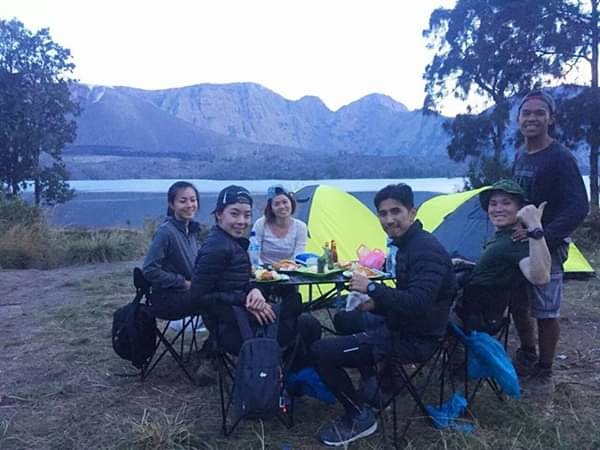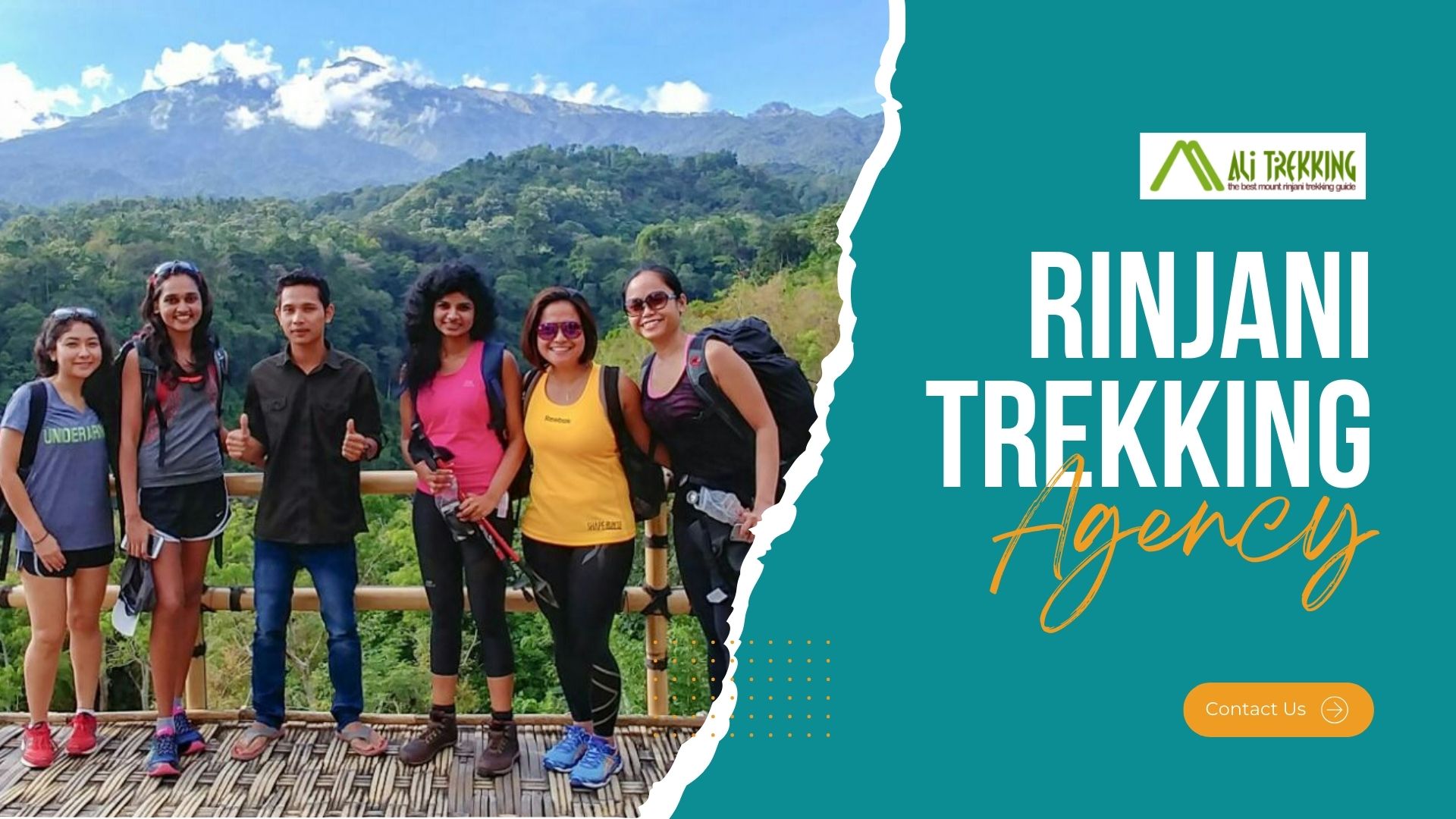Climbing Mount Rinjani is an unforgettable experience. However, to ensure your journey is safe and enjoyable, it’s important to understand various factors that influence your trek, particularly weather forecasts. Mount Rinjani, located on Lombok Island, Indonesia, is one of Southeast Asia’s popular trekking destinations.
In this article, ALI TREKKING will discuss the weather forecast for Mount Rinjani, essential weather-related information for trekking, and tips for dealing with different weather conditions during your journey. We will also provide information on trekking costs, interesting facts about the mountain, and the latest weather forecast to help you plan your trip better.

Why is the Weather on Mount Rinjani Important?
Weather on the mountain significantly affects trail conditions, safety, and comfort during the trek. At Mount Rinjani, weather changes can occur rapidly and often pose challenges for trekkers. Understanding the weather forecast before starting your trek will help you plan appropriate preparations, choose the right gear, and avoid potentially dangerous situations.
A. Impact of Weather on Trail Conditions
Weather can affect trail conditions. Heavy rain can make the ground slippery and increase the risk of slipping. Additionally, extremely low temperatures at night can make the trek more challenging and potentially lead to hypothermia if you don’t have adequate gear.
B. Trekker Safety
Extreme weather conditions, such as storms or heavy rain, can increase the risk of accidents. Knowing the weather forecast will help you decide if it’s safe to continue your trek or if you need to postpone until conditions improve.
C. Comfort During Trekking
Appropriate weather will enhance your trekking comfort. Planning based on the weather forecast can help you choose the right clothing and gear, ensuring you stay comfortable throughout your journey.
Seasonal Weather Forecast for Mount Rinjani
Mount Rinjani experiences two main seasons: the rainy season and the dry season. Understanding the differences between these two seasons will give you a clear idea of the expected weather conditions.
A. Rainy Season (December – March)
The rainy season on Mount Rinjani typically lasts from December to March. During this period, rainfall is quite high, and trail conditions can become very wet and slippery. Here are some points to consider during the rainy season:
- Heavy Rain: Heavy rain can occur sporadically, often accompanied by thunderstorms. This can make the trekking paths slippery and difficult to traverse.
- Temperature: Air temperature during the rainy season tends to be warmer during the day but can drop drastically at night. Be prepared with cold-weather gear for the nights.
- Rivers and Water Flow: River and lake flows may increase, making some trails difficult to access.
B. Dry Season (April – November)
The dry season on Mount Rinjani runs from April to November. During this time, the weather is generally more stable and dry, but temperatures can become very hot during the day. Some aspects of the dry season are:
- Drought: Rainfall is very rare, and trekking paths tend to be drier. This can reduce the risk of slipperiness but increase the risk of dehydration.
- Temperature: Daytime temperatures can be very hot, while nights remain cool. Make sure to carry enough water and suitable clothing to cope with these temperature changes.
- Trail Conditions: Trail conditions are usually better than in the rainy season, but watch for signs of extreme dryness, such as forest fires.
Preparing Gear Based on Weather Forecast
Knowing the weather forecast will help you prepare the right gear. Here’s a guide to packing your gear based on the weather forecast.
A. Rainy Season
- Rain Jacket: Be sure to bring a waterproof rain jacket to protect yourself from heavy rain.
- Waterproof Hiking Shoes: Waterproof hiking shoes are essential to avoid wet feet and blisters.
- Waterproof Clothing: Use quick-drying clothing that wicks away sweat. Bring several layers to manage body temperature.
- Waterproof Tent: Ensure your tent can withstand rain and does not leak.
B. Dry Season
- Light and Breathable Clothing: Wear light, moisture-wicking clothing to handle the hot daytime temperatures.
- Sun Protection: Don’t forget sun protection items like hats, sunglasses, and sunscreen.
- Sufficient Water: Bring plenty of drinking water and, if necessary, a water filtration system.

Why Choose ALI TREKKING?
ALI TREKKING is the right choice for a safe and satisfying trekking experience on Mount Rinjani. Here are some reasons why ALI TREKKING is the best option:
- Experience and Expertise: ALI TREKKING has years of experience guiding trekkers on Mount Rinjani, with a thorough understanding of weather conditions and trail routes.
- Quality Equipment: ALI TREKKING provides high-quality trekking gear suitable for various weather conditions, ensuring safety and comfort throughout your trip.
- Experienced Guides: Guides from ALI TREKKING are not only skilled in trail navigation but also adept at handling sudden weather changes and providing accurate weather information.
- Excellent Customer Service: ALI TREKKING is committed to providing exceptional customer service, with responsive support and attention to the individual needs of trekkers.
Weather on Mount Rinjani
Weather for climbing Mount Rinjani can vary greatly and change drastically in a short time. Generally, the weather in the area is influenced by the rainy and dry seasons. The rainy season usually lasts from November to March, while the dry season lasts from April to October. During the rainy season, trekkers should be prepared for heavy rain, fog, and cooler temperatures at night. Conversely, the dry season offers drier conditions with the potential for higher temperatures and more humid air.
Before starting your trek, it’s crucial to check the latest weather forecast. Unpredictable weather conditions can impact trail paths and your safety. Mount Rinjani has several trekking routes with varying weather characteristics, so accurate weather information will help you prepare better. Use reliable weather apps or websites to get detailed forecasts.
How Much Does it Cost to Climb Mount Rinjani?
The cost of climbing Mount Rinjani varies depending on several factors, including the duration of the trek, the type of package chosen, and the facilities provided. Generally, the cost of a Rinjani trek includes guide fees, porter fees, national park entry tickets, and camping gear. Standard trekking packages usually cover 2-3 days, with costs ranging from IDR 2,500,000 to IDR 5,000,000 per person.
Additional costs may be required for renting trekking equipment, food, and tips for guides and porters. Ensure you choose a reputable trekking operator like ALI TREKKING, which offers quality services at reasonable prices. Understanding the cost structure and ensuring there are no hidden fees will help you plan your trip budget more effectively.
Facts About Mount Rinjani
Mount Rinjani is an active volcano located on Lombok Island, Indonesia, with an elevation of 3,726 meters above sea level. The mountain is renowned for its large caldera surrounding Lake Segara Anak, one of the main attractions for trekkers. Additionally, Rinjani is known for its rich biodiversity, with various unique flora and fauna.
Mount Rinjani is part of the protected Rinjani National Park, aimed at preserving its natural beauty and ecosystem. Reaching the summit of Rinjani offers spectacular views but requires careful preparation. Popular trekking routes include Sembalun, Senaru, and Timbanuh, each offering different experiences and challenges.
Location of Mount Rinjani
Mount Rinjani is located in the northern part of Lombok Island, about 120 km from the provincial capital, Mataram. Rinjani National Park covers over 40,000 hectares and includes various ecosystems, from tropical rainforests to mountain grasslands. The location is easily accessible from Mataram by private vehicle or public transport, and many trekking operators, such as ALI TREKKING, offer travel packages from this city.
Weather Forecast for Mount Rinjani
Weather forecasts for Mount Rinjani are crucial for trekking planning. Given the mountain’s rapidly changing weather, it’s essential to check the weather forecast regularly before and during the trek. Rinjani’s weather can be influenced by local atmospheric conditions, so accurate weather forecasts will help you prepare the right gear.
Reliable weather sources include local weather websites, international weather apps, and information from local guides. Be sure to consider the possibility of extreme weather changes, such as heavy rain or thick fog, which can impact visibility and trekking comfort.
Rinjani Weather: Tips for Handling Rainy Conditions
Dealing with rainy weather conditions requires careful preparation. If you plan to climb Mount Rinjani during the rainy season, make sure to bring waterproof gear, such as rain jackets, waterproof trekking shoes, and moisture-resistant camping equipment. Additionally, it’s important to follow local guide recommendations and adhere to national park regulations to ensure your safety.
Rainy weather in Rinjani can also affect trail conditions, making them slippery and hazardous. Pay attention to trail conditions and tread carefully. If the weather conditions become too severe, remember to seek shelter or postpone your trek for safety.
Understanding the weather forecast for Mount Rinjani and preparing well for various weather conditions is key to a safe and enjoyable trekking experience. By combining weather forecasts with knowledge of trekking costs, facts, and the mountain’s location, you can plan your trip more effectively.
ALI TREKKING is ready to assist you with professional trekking services and provide up-to-date information on Rinjani’s weather to ensure your journey goes smoothly. Feel free to contact us for advice and trekking packages that suit your needs. Happy trekking, and may your journey to Mount Rinjani be an unforgettable experience!
